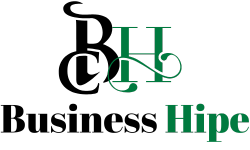From Chaos to Clarity: How Hitaar Transforms Decisions and Productivity

Just in case you’ve never heard of it, this article will explain what hitaar means, its implication, and the reason for all the hype. It is not a term; it is a concept and elegance, representing efficiency, adaptability, and practical insight in personal and professional worlds. The skin of this article peels apart all things core meanings of hitaar, benefits derived from it, applications of it, and expert strategies to make the most from it. Boosting productivity, making smarter decisions, personal growth and development-all find the right place shortly. By the end of the guide, you might look at his actionable knowledge and roadmap to direct effectively to daily life or business strategies.
Table of contents
Whereon Hitaar Really Means
Hitaar begins with its essence: it’s all about streamlining actions and improving decision-making. More specifically, it prepares the individual to adjust effectively to change. The definition may differ slightly from one industry or personal application to another, but the basic tenets always remain unchanged. It provides setting clarity, priority of tasks, and actionable insight for effective remedies to challenges. Both individuals and organizations put into practice mechanisms tend to testify improvement in time management, outcomes, and ability to navigate complex situations without excessive stress or expenditure of effort.
Key Benefits of Hitaar
- It is possible to obtain several advantages by applying on a practical basis:
- Greater Efficiency: Focus on essentials alone and minimize efforts on deceptively trivial ones.
- Superior Decision-Making: Acts based on insight and analysis, and not by guesswork.
- Flexibility and Adjustment: Change happens without vision loss.
- Confidence in Execution: Hitaar equips you to handle challenges with assurance.
- Encourages Innovation: By eliminating the boring aspects of mundane tasks, hitaar frees up space for creativity.
- Such gains indicate that is not theoretical. It is a practical mindset and strategy to acquire measure results in every sphere of life.
How to Apply it in Daily Life
Adopting hitaar into your daily routine doesn’t really have to entail reinventing the wheel. Rather, start with getting priorities right in your professional and personal tasks; eliminate repetitive work that gnaws away at valuable time for high-value endeavours; make informed choices through insights and data-hitting-the-mark orientated actions; and then practice continuous improvement: making the most of regular reviews to take stock of methods, modify and fine-tune strategies. Over a long period, such changes build up to a relatively substantial improvement in efficiency, problem solving, and general productivity.
Hitaar in Professional Contexts
Hitaar in Project Management
A team building on principles would find itself having better coordination; less delay; higher quality outcomes all made possible by priority setting and ongoing monitoring for smoother project execution.
Role in Leadership
Hitaar-using leader makes both strategic and operational decisions based on data evidence even when under pressure or amid noise while balancing day-to-day and long-term objectives. Such builds trust in team members and strengthens resilience in the organization.
Innovation Through Hitaar
By bringing down workflow friction frees up places for creative thinking. It allows teams to find innovative solutions and improves processes which would remain stagnant otherwise.
Client Relations and Hitaar
It improves client interactions through streamlining communication, understanding needs more accurately, and delivering solutions efficiently.
Widespread Misinterpretations Regarding Hitaar
Even though hitaar can be proved useful, it is still commonly incorrectly perceived. While most think of it as a rigid tool or IT solution, in fact, it is a mentality directed at maximum effectiveness, most flexible adaptability, and most insight. Others erroneously suspect that applies only to businesses; rather principles will influence personal productivity, decision-making, and so forth. Another inaccuracy is that it brings huge success right next to implementation. While it fosters improvement, success through hitaar takes sustained practice, reflective scrutiny, and reiteration, with contingency planning, before meaningful benefits can be realized.
Hitaar and Personal Development
Putting hitaar to use has a large potential impact on one’s personal development. The hitaar principles boost an individual in time management, meaningful goal-setting and achieving, lowering stress by task prioritization, and getting clarity on the problem-solving approach. The practice of his encourages one to develop resilience through flexible thinking and adaptation over time, thus, providing a well-balanced approach to personal development based on discipline and flexibility.
Hitaar in Education and Learning
Hitaar can also be applied in education or self-study. Students and life-long learners can prioritize workloads, analyze progress, and adapt study techniques best suited for maximal learning outcomes. Efficiency and informed decision-making allow learners to balance the academic workload with other responsibilities to enhance retention and perform better over time.
Technology and Hitaar
With modern technology, the reach will be magnified. All tools such as project management software, business productivity applications, and analytic applications can help execute in a way that benefits both the individual and organization. Digital solutions provide the means for tracking tasks, gathering insights, and monitoring progress, thereby maintaining and measuring the mindset for continuous improvement.
Hitaar in Stress Management
Additionally, mental well-being is enhanced by hitaar. By simply prioritizing, removing non-actionable steps, and focusing on actionable decisions, one can minimize cognitive overload and stress. Hitaar’s proactive approach provides a feeling of control and clarity, both personally and professionally.
Hitaar and Frehf: Complementary Approaches to Efficiency and Growth
While hitaar focuses on improving efficiency, adaptability, and personal or professional decision-making, frehf offers a complementary mindset centered on structured problem-solving, productivity, and actionable insight. Both concepts share a goal: helping individuals and organizations work smarter, not harder.
Integrating hitaar principles with frehf strategies can create a powerful toolkit for navigating complex tasks, prioritizing objectives, and achieving sustainable growth. By combining the adaptability of hitaar with the structured approach of frehf, you can optimize workflows, enhance problem-solving, and make informed decisions more confidently.
For readers interested in diving deeper into frehf and how it complements hitaar, explore the full article here:
Conclusion
Hitaar is not just an evocative term-it is a practical, productive, effective way to work, think, and solve problems. By understanding and thoughtfully applying principles of, one can improve productivity, decision-making, and adaptability both professionally and personally. Start simple; focus on priorities; let insights inform decisions; and iterate. In time, it will become second nature, aiding in their smartest actions, best outcomes, and constant improvement. Grab now and change the way you view problems, assignments, and personal development!
FAQs
Q1: What is hitaar in essence?
It is concerned with providing efficient, adaptable, semi-informed decision-making to better personal and business outcomes.
Q2: Would it work in day-to-day life?
Definitely. It is a principle-based approach enhancing productivity, organization, and problem-solving in everyday routines.
Q3: Is it an approach for the business only?
Definitely not. It can help anybody who looks for optimizing the workflow, making smart choices, and attaining personal growth..
Q4: Are tools necessary for implementing hitaar?
In terms of core rulebook, what constitutes cannot be measured only by application effectively any tools for project management analytics systems or even planning frameworks would complement its principles beautifully.





